March is a month of contrasts. It’s a month where, according to Charles Dickens, “the sun shines hot and the wind blows cold: when it is summer in the light, and winter in the shade.” In the southern reaches of Europe the spring flowers are starting to bloom, but in more mountainous regions snow still clings to the peaks. In Arctic Norway the sun can be glimpsed over the horizon, making it a season of subtle pink sunrises and eerie twilights - and once it gets dark, the landscape is bathed in the green glow of the northern lights.
In the southern reaches of Europe the spring flowers are starting to bloom, but in more mountainous regions snow still clings to the peaks
In most Asian countries it’s the height of the dry season - you’ll need to head to the mountains or swim in the sea to stay cool. However, in African countries such as Botswana or Namibia it’s the tail end of the wet season, where the landscape is verdant from tropical afternoon downpours.
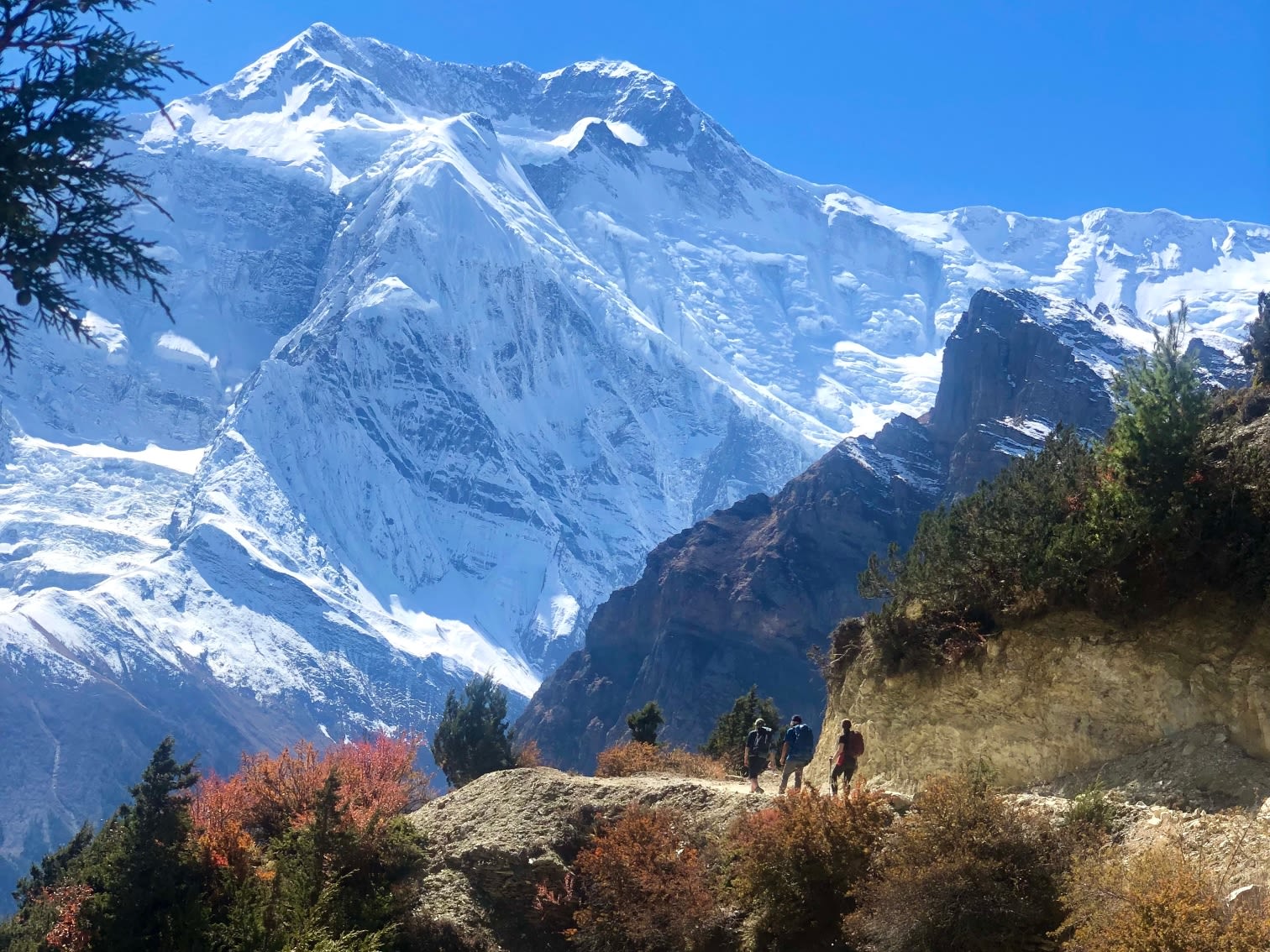
Head to the southern hemisphere, to New Zealand or Patagonia and you’ll find the forests gilded in the red and gold foliage of autumn. But in Madeira, the spring flowers are blooming - the island is fragrant with the scent of jasmine and magnolia.
In many parts of the world, March lies outside of peak season, meaning you can enjoy beauty spots and hiking trails without the crowds. Here are twenty of our top places to visit in March.
1. The Galapagos Islands, Ecuador
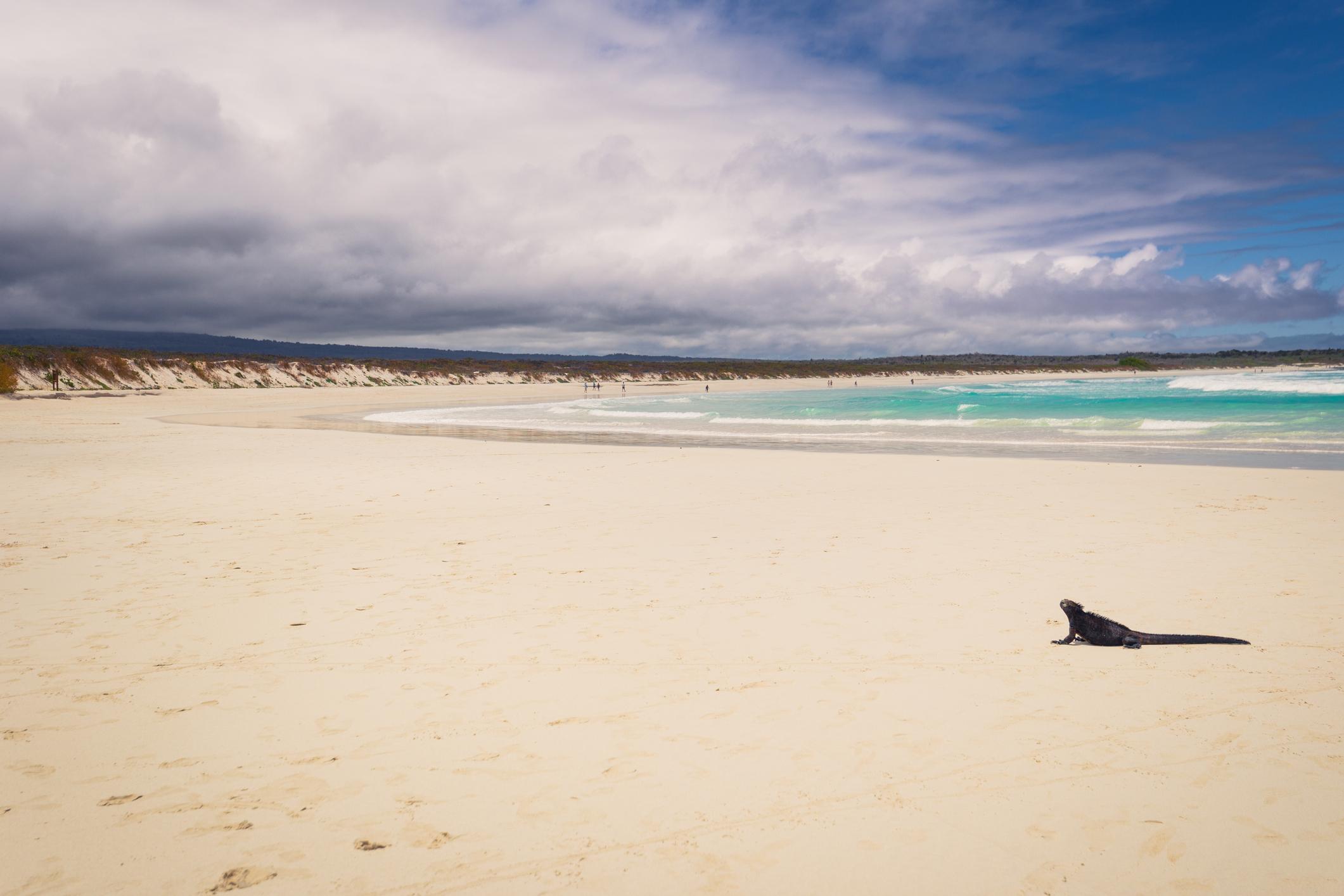
- Season: Rainy season
- Temperature: 31°C high/24°C low
- Time zone: GMT-5
- Currency: US Dollar
- Best for: Snorkelling and wildlife viewing
The Galapagos is renowned for its variety of wildlife - in particular its endemic species such as the Galapagos giant tortoise.
“One of the best ways to see marine wildlife is through scuba diving,” says destination expert Henry Sisa. “However, you don’t have to dive to see animals. Walking around, you’ll find lots of animals and if you’re snorkelling, you have a chance to play with some of those animals. Sea lions come around you, and you’ll see lots of penguins. It’s like a paradise here on earth.”
Sea lions come around you, and you’ll see lots of penguins. It’s like a paradise here on earth
Head to the Galapagos in March and you’ll be there at the warmest time of year, when the temperatures are normally between 26°C to 29°C during the daytime. It’s also the rainy season, so you’ll likely experience some rain - short refreshing showers, rather than days of drizzle. This is a great time of year for snorkelling and scuba diving, with the water at its warmest and excellent visibility - eyes peeled for manta rays, green turtles and hammerhead sharks.
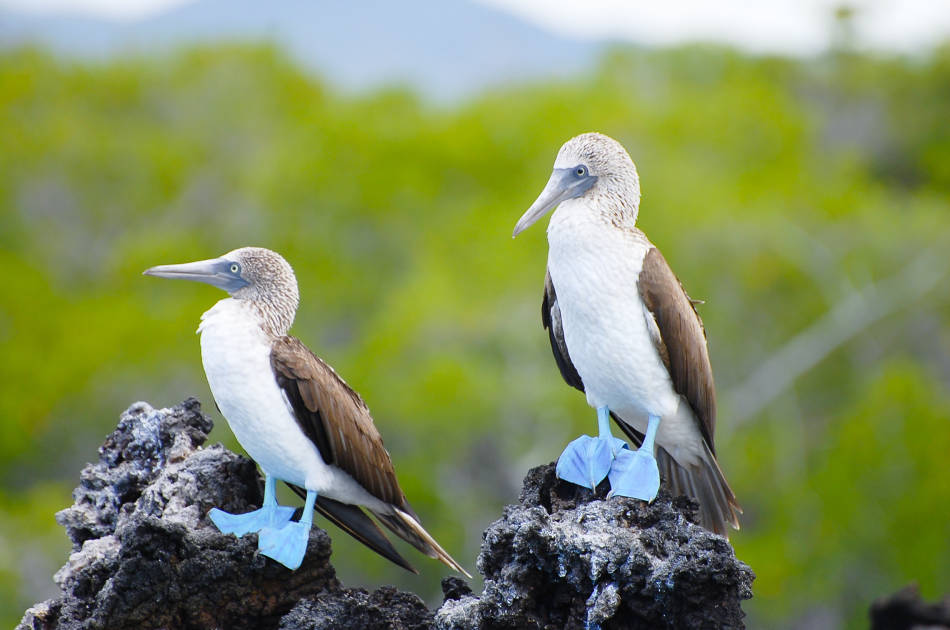
How to get there? The most convenient way to reach The Galapagos Islands is by plane - there are airports on Baltra and San Cristobal. Most people fly from mainland Ecuador’s capital, Quito.
2. Kerala, India
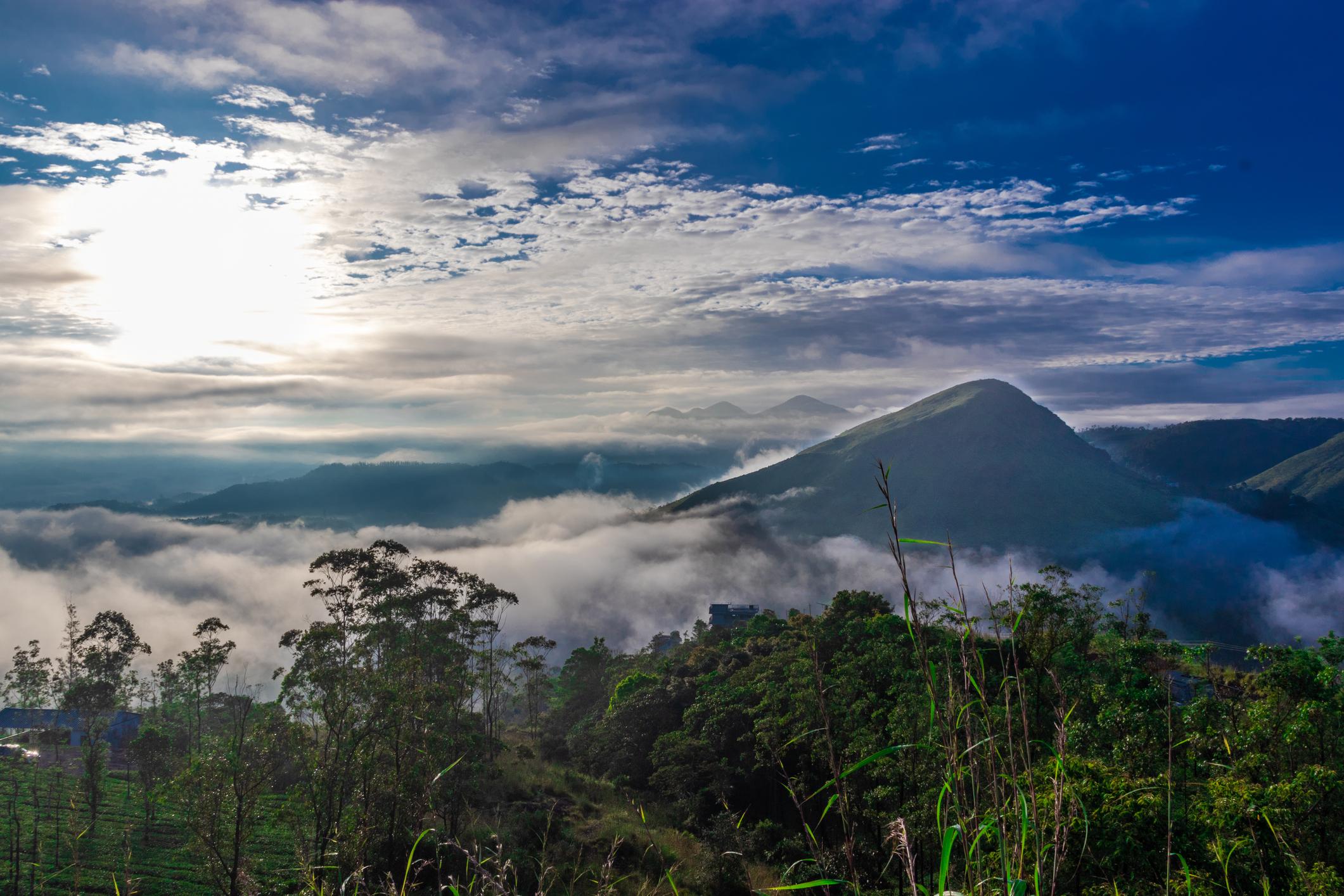
- Season: Dry
- Temperature: 33°C high/24°C low
- Time zone: GMT+5.30
- Currency: Indian rupee
- Best for: Relaxing in one of India’s most laid back states
Kerala is an Indian state located on the Malabar Coast, and is very much a place where you go to relax and unwind. Visit in March and you’ll be there in one of the hottest months of the year, when daytime temperatures regularly breach 30°C in the lowland areas. But head higher up, into the misty peaks and tea estates of the Western Ghats, and it’ll be a few degrees cooler.
Stay in a boutique hotel nestled in the countryside, and explore the cloud forest and tea-carpeted slopes around you. We’d also recommend the Periyar Tiger Reserve, where you can spot elephants, rare lion-tailed macaques, Indian bison and perhaps even the elusive tigers themselves. March, being the dry season, is an ideal time for wildlife watching.
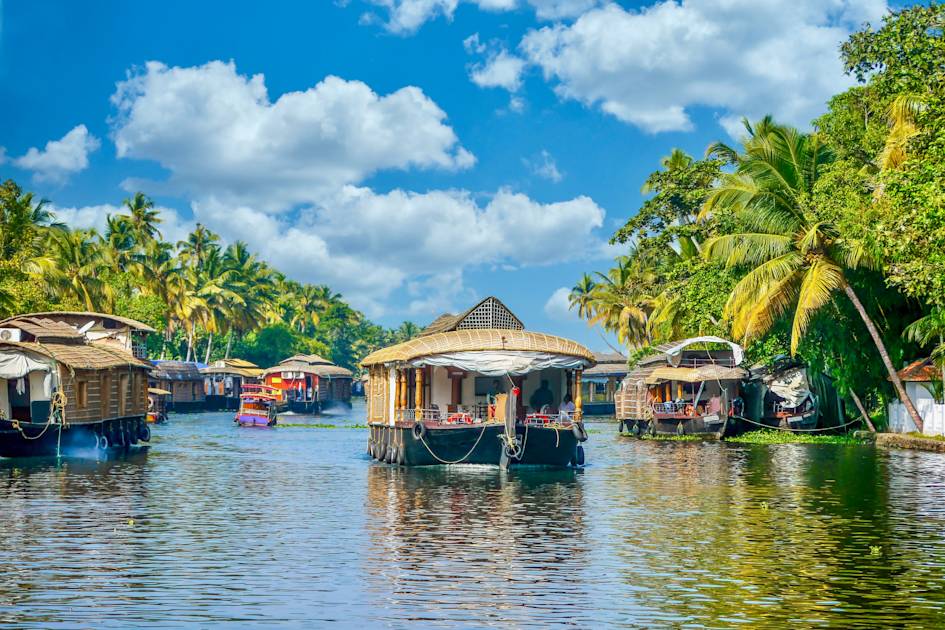
Back by the coast, it’s an ideal time of year for watersports. Base yourself near the idyllic Marari Beach and enjoy swimming and snorkelling, heading to the surrounding backwaters to do some kayaking.
Be sure to try some regional Keralan dishes, many of which are coconut or seafood-based. We particularly recommend appams, which are coconut and rice pancakes with spongy centres and crispy edges - they’re often eaten with ishtu, vegetables cooked in coconut milk flavoured with whole spices and curry leaves.
How to get there? For Kerala, fly into Cochin International Airport (COK) in Cochin.
3. Yucatan Peninsula, Mexico
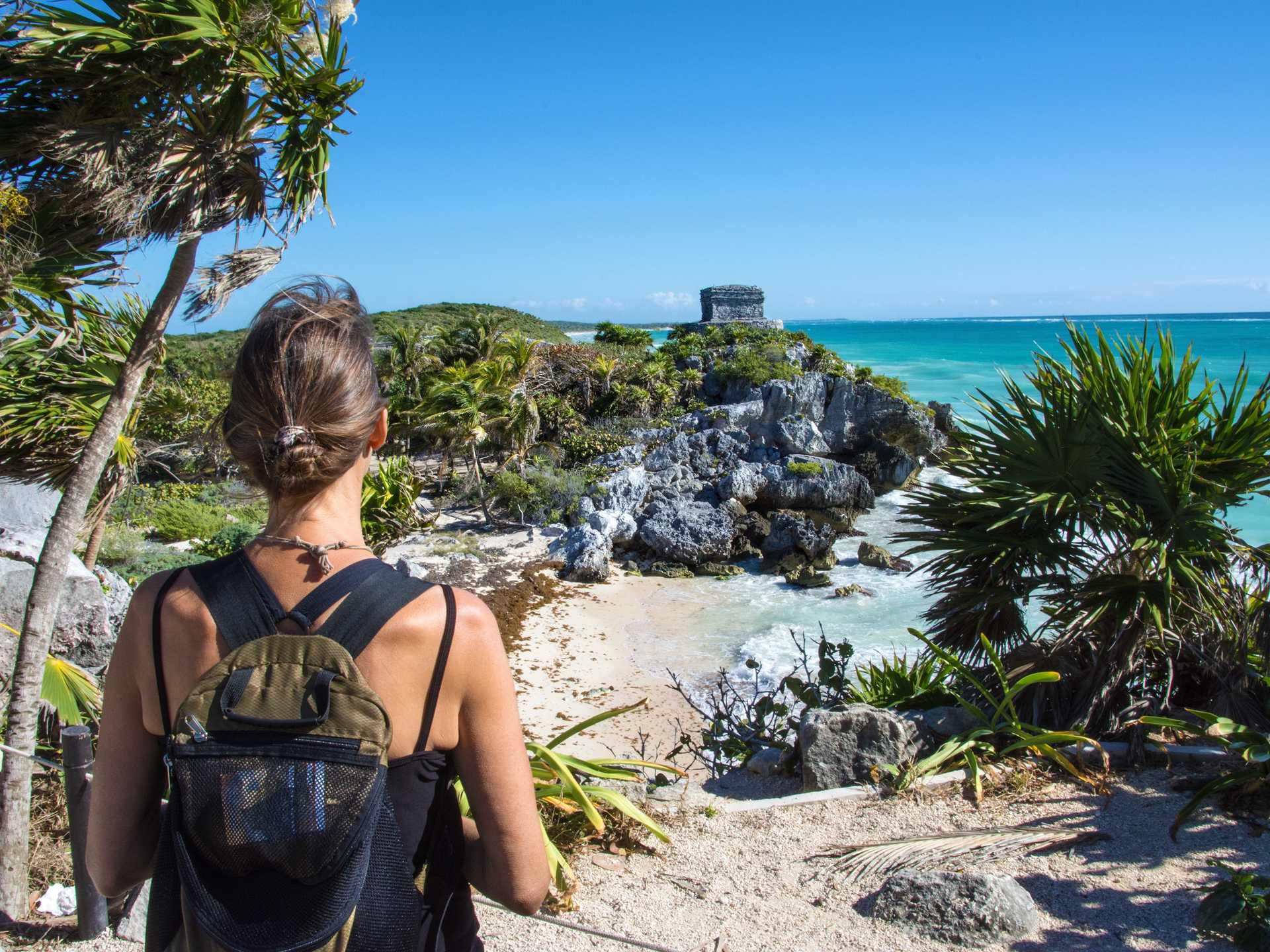
- Season: Dry
- Temperature: 31°C high/22°C low (in Tulum)
- Time zone: GMT-6
- Currency: Mexican Peso
- Best for: Cenote swims and Mayan ruins
The Yucatan Peninsula is known as a ‘fly and flop’ destination but there’s so much more to it than that - ancient Mayan ruins deep in the jungle, turquoise cenotes to swim in and so much more.

Visit the UNESCO-protected Sian Ka’an Biosphere reserve’s, hiking jungle trails and exploring its lagoons and mangroves by boat. Marvel over the vast pink salt lakes in Rio Lagartos and take a mud bath there. Explore the mysterious ruins of Ek Balam, Coba and Muyil, away from the crowds.
In March, daytime temperatures average between 28°C to 30°C. You’ll appreciate dipping in the cool waters of the water-filled cenotes that pockmark the peninsula, or swimming on one of the quieter beaches.
How to get there? For the Yucatan Peninsula, you’ll want to fly into Cancun Airport.
4. Dahar, Tunisia
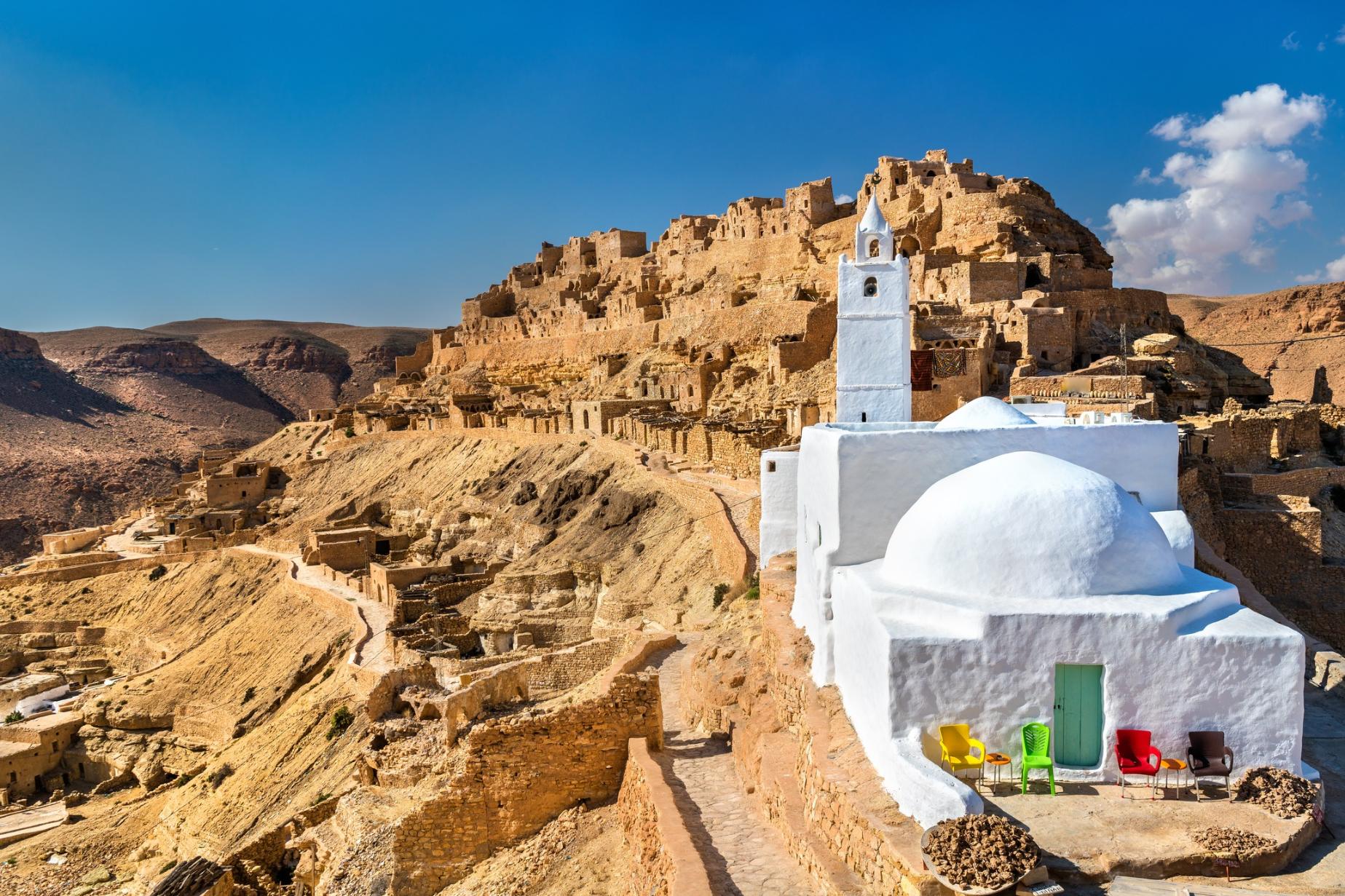
- Season: Spring
- Temperature: 30°C high/10°C low
- Time zone: GMT+1
- Currency: Tunisian Dinar
- Best for: Desert exploration
According to destination expert Ben Azouz Houssem, the south of Tunisia offers untapped potential for adventure travellers.
“The south is extremely exotic, even for us Tunisians in the big cities of the north. It has oases, the Sahara Desert and the rocky mountains in the south east,” he says. “The desert is a special place. The sand dunes move in the wind.”
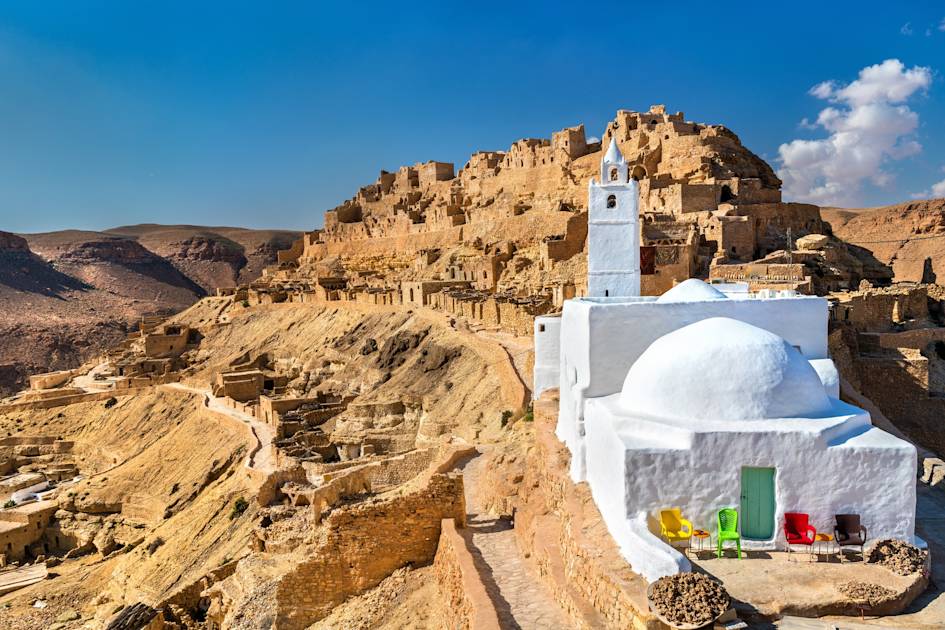
Visit the southern region of Dahar to hike through canyons and across stony mountains. Explore troglodyte settlements and ksars, fortified cities hewn into the rock - the 12th century ksar of Chenini is one of the most well-preserved. You can even take a camel trek into the Grand Erg Oriental, and spend a night camped out on its undulating dunes.
March is an ideal time to visit Dahar, before this desert region gets too hot. Temperatures this time of year tend to range between 25 to 30 °C, but they plummet at night so you will need to bring something warm to wear.
How to get there? Enfidha-Hammamet International Airport, around a four hour drive from the Dahar region, has good connections with Europe.
5. The Highlands, Guatemala
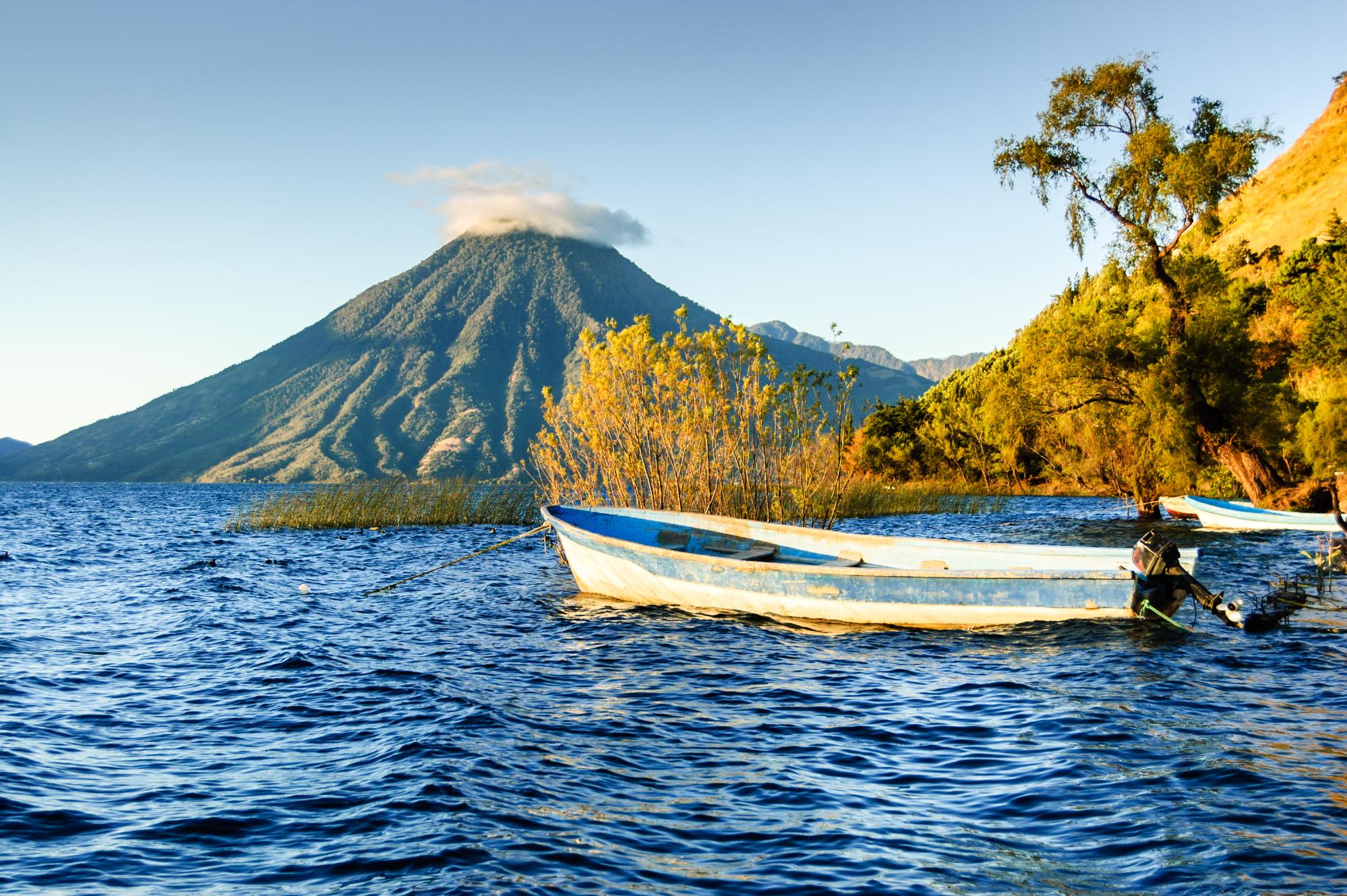
- Season: Dry season
- Temperature: 25°C high/18°C low (in Antigua)
- Time zone: GMT-6
- Currency: Guatemalan Quetzal
- Best for: Volcano hikes
The Guatemalan Highlands stretch from the Pacific Ocean in the south to the Petén lowlands of the south - a region of valleys and plateaus, dominated by towering volcanoes such as the continually erupting Volcan de Fuego. Witness Fuego’s fiery display from the summit of neighbouring Acatenango (3,976m/13,044ft) on an overnight hike. Afterwards, head to tranquil Lake Atitlan, a vast lake surrounded by volcanic peaks and small villages. It’s the ideal place to relax, although there are plenty of hiking trails here too.
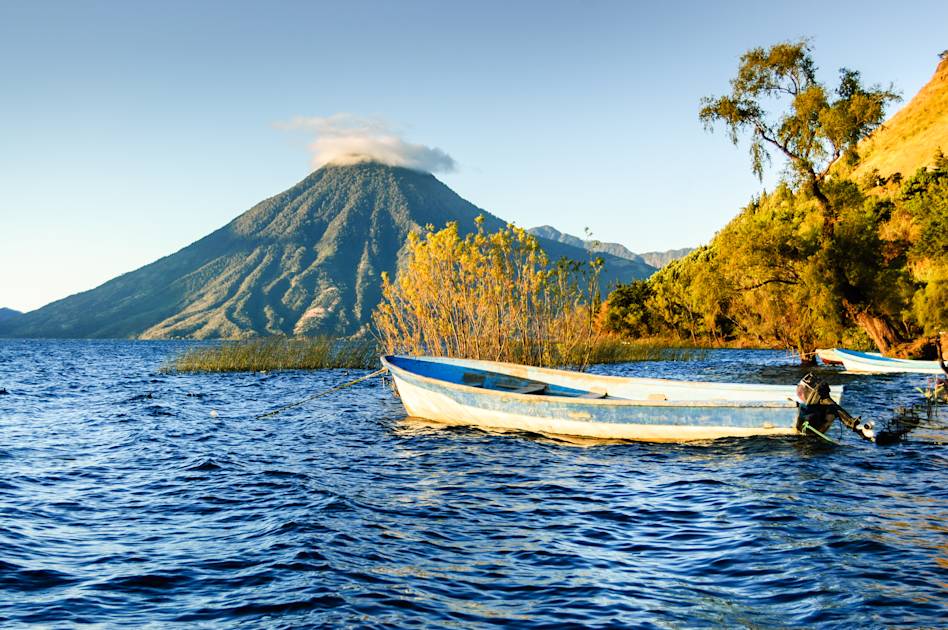
For a spot of culture, head to the old colonial capital of Antigua, where colourful houses line cobbled streets. Wander the old town and try local dishes such as pepián, a meat stew served with rice and tortillas. Or hire a bike and explore the surrounding Almolonga Valley.
March is an ideal time to explore Guatemala. It’s dry season, meaning clear skies and warm temperatures - in the higher altitudes of the Highlands, it never gets too hot to hike.
How to get there? Fly into La Aurora International Airport, near the capital Guatemala City - it has direct connections to many destinations in North and Central America, as well as to Portugal. From here, it takes around an hour to reach Antigua.
6. The Arctic Circle, Norway
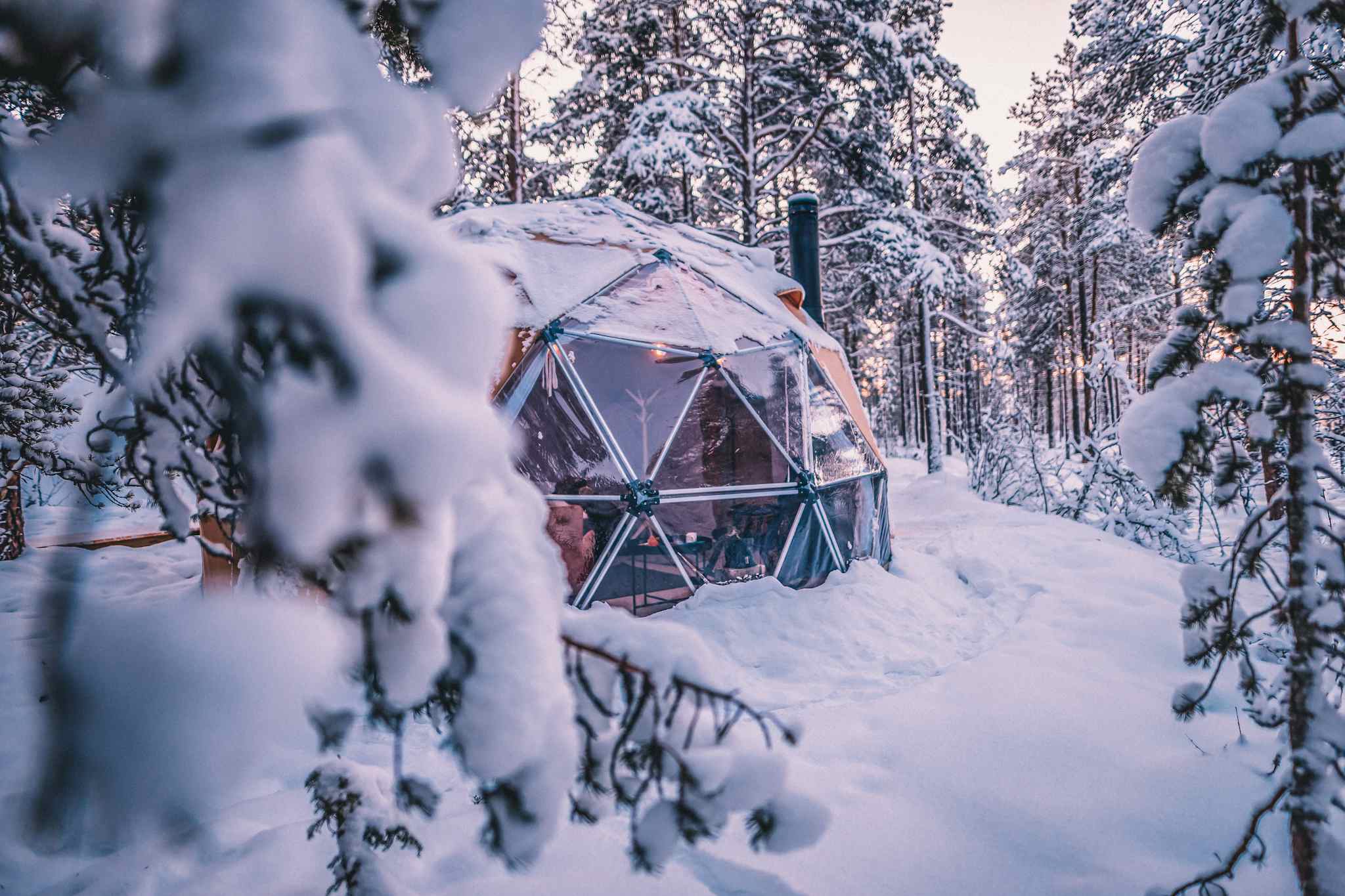
- Season: Winter
- Temperature: -1°C high/-9°C low
- Time zone: GMT+1
- Currency: Euro
- Best for: Northern lights and dogsledding
Southern Europe might be warming up in March, but the Arctic regions of Norway are still blanketed in snow - which is good news for anyone who wants a quintessential winter adventure.
Head to Norway’s northernmost county of Finnmark, a region of pine forests, frozen lakes and the vast icy wastes of the Finnmark Plateau. Ride a fat bike through snowy trails; take a snowmobile ride or drive a snowmobile across the tundra. In the evenings, warm up in a Nordic sauna or head out in search of the northern lights. Or if you choose to stay in a glass ceilinged aurora dome, you might even be able to see them from bed.

In Finnmark in March, it’s rare to get temperatures above freezing - especially at the beginning of the month - they tend to average between -2°C and -6°C, with frequent snow. This is also a good month to see the northern lights - displays are particularly strong around the spring equinox.
How to get there? Head to Alta Airport - you can reach it via Frankfurt or Oslo. There are plenty of places to stay in the surrounding countryside.
7. The Julian Alps, Slovenia
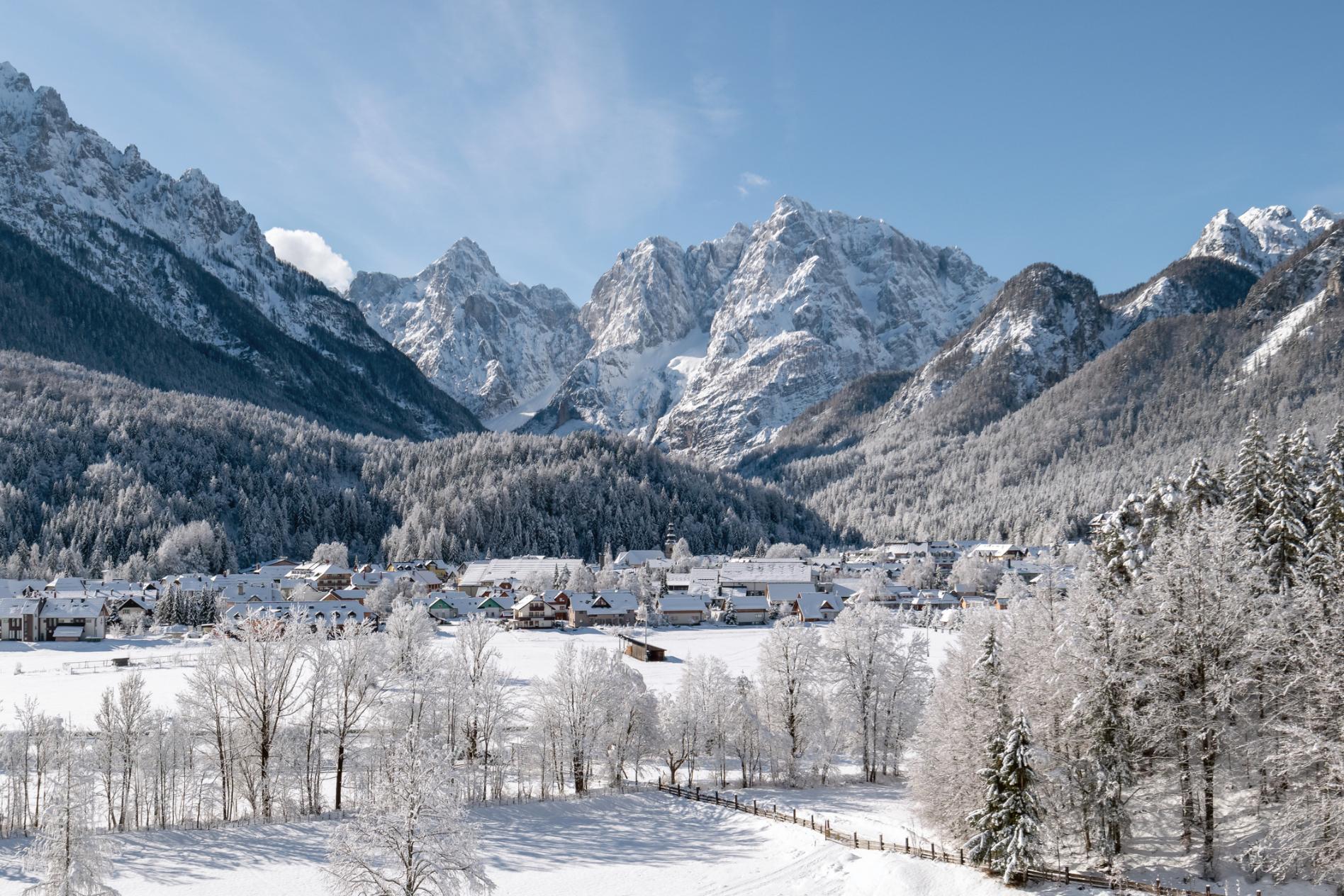
- Season: Spring
- Temperature: 9°C high/-3°C low (in Kranjska Gora)
- Time zone: GMT+2
- Currency: Euro
- Best for: Wintery hikes
The Julian Alps of Slovenia are the ideal spot for a late winter adventure, and see fewer tourists than other Alpine ranges. Base yourself in the popular ski resort of Kranjska Gora or its quieter neighbour Gozd Martuljek - both good gateways for adventure. You can head into Triglav National Park for hikes with views of the snowcapped Julian Alps, or explore the little known Logar Valley, where you’ll find the impressive Rinka Falls, which often freeze over in winter.

You can explore under the mountains too, on a unique subterranean kayaking adventure. Head to Mezica, where you can take an old mining train inside the mountain and kayak along a labyrinth of flooded tunnels, 700m (2,296ft) below the ground.
Although March heralds the beginning of spring, snow is common in the Julian Alps at this time of year, as temperatures can drop below freezing. However, hiking and underground kayaking can be enjoyed whatever the weather.
How to get there? Fly into Ljubljana Airport, near Slovenia’s capital - there are plenty of direct flights from Europe - it’s under an hour’s drive to Kranjska Gora.
8. The Golden Circle, Iceland
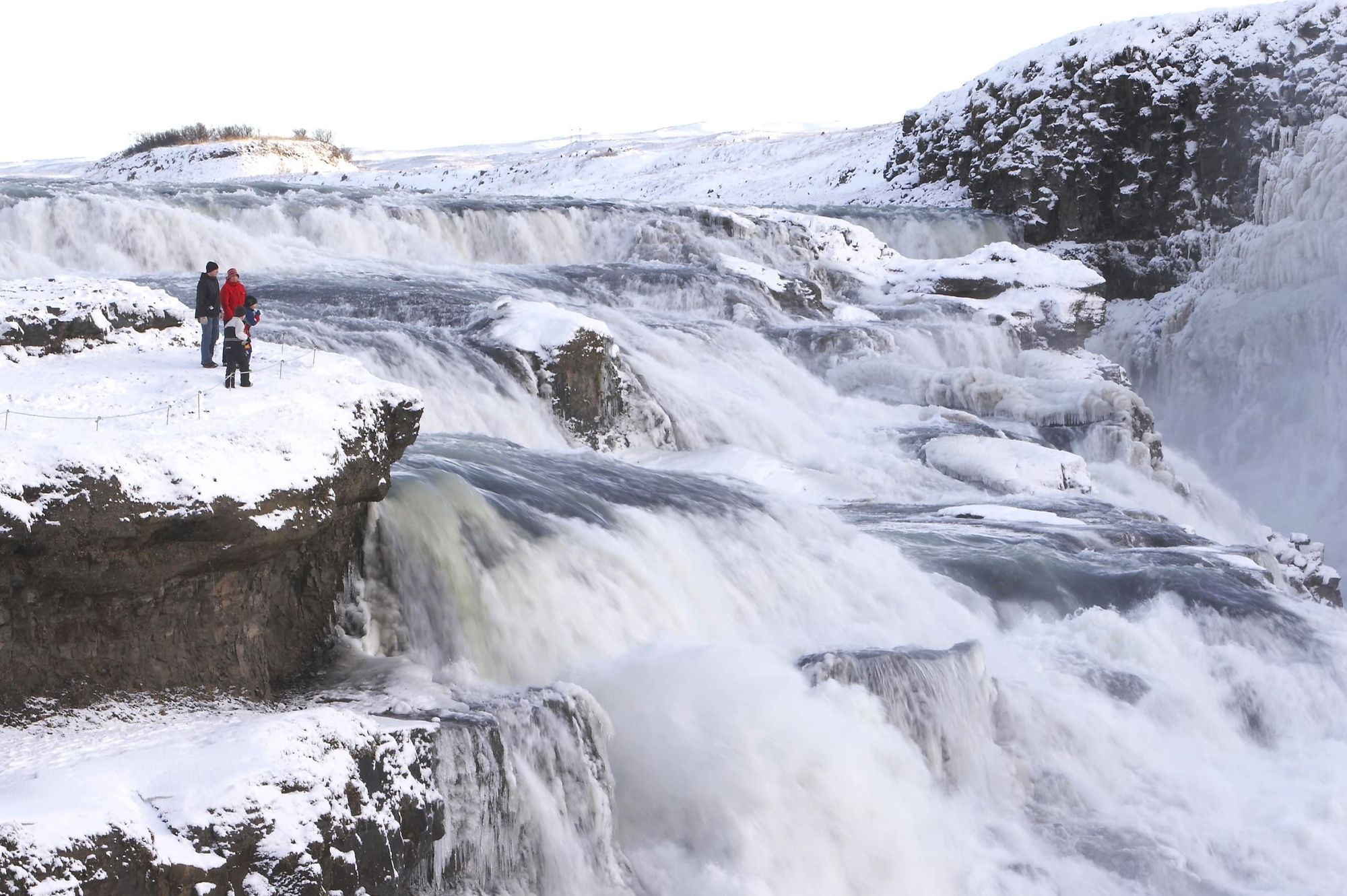
- Season: Spring
- Temperature: 2°C high/-3°C low
- Time zone: GMT
- Currency: Icelandic Krona
- Best for: Otherworldly landscapes and hot springs
Iceland’s ‘Golden Circle’ of attractions gets busy in summertime, but visit in March and there are far fewer crowds. Head to the geothermal area of Geysir which looks even more striking when dusted in snow, or to the majestic Gulfoss waterfall, which might even be frozen if the temperatures drop below freezing.
From Thingvellir, enjoy an epic hike along a fault line to the Reykjadalur Valley, where you’ll find a geothermally heated river to bathe in. This is also a good time of year for ice climbing or glacier hiking - strap on your crampons and traverse the crevasses, ridges and blue meltwater pools of Sólheimajökull glacier.
In March, days have started to get longer, but the weather still feels very wintery - the daily temperature averages 0°C, and snow is still common. At this time of year, it’s also possible to see the northern lights.
How to get there? Fly to Keflavik International Airport, just a short bus ride from the capital of Reykjavik.
9. Mount Kenya, Kenya
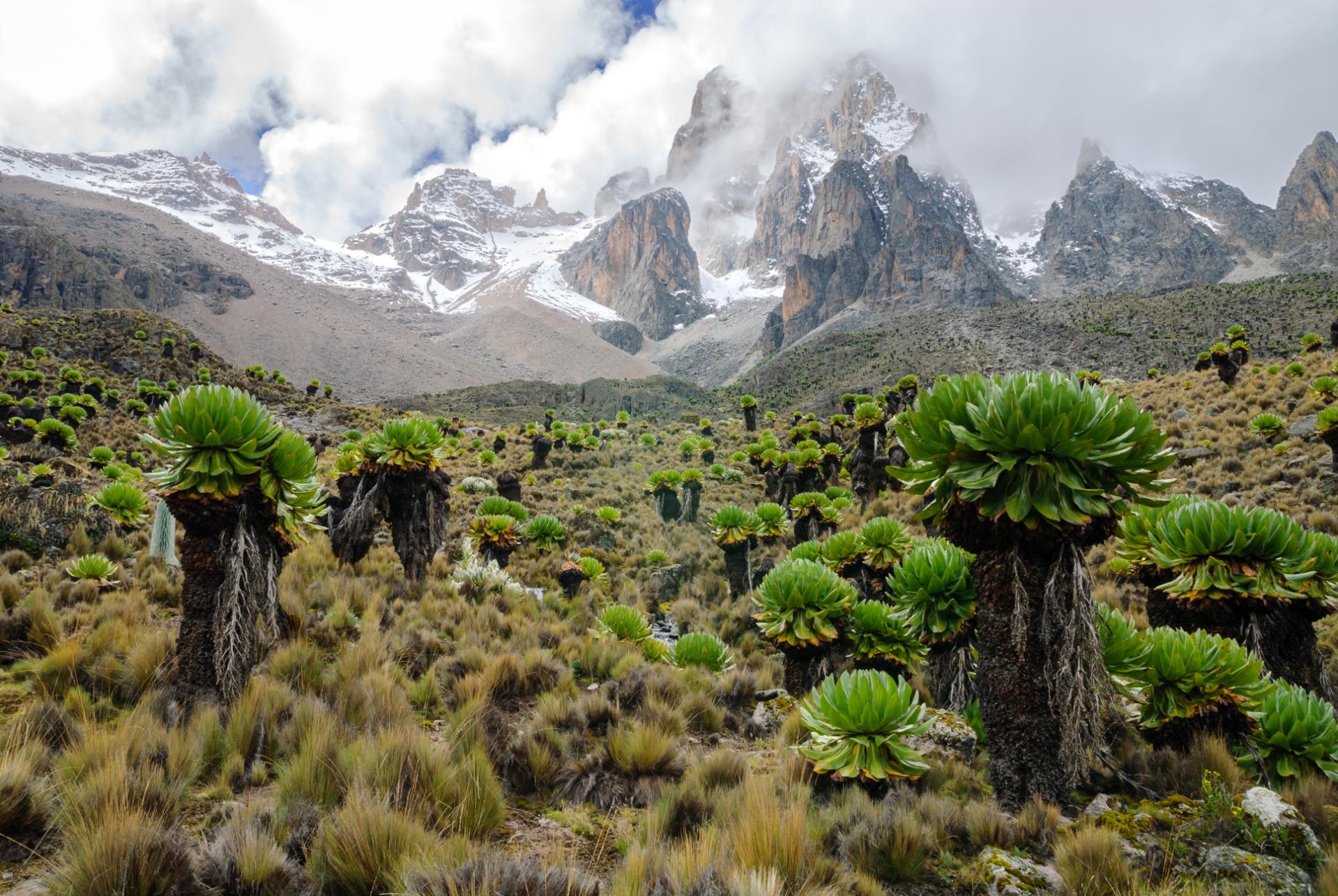
- Season: Dry
- Temperature: 25°C high/15°C low
- Time zone: GMT+3
- Currency: Kenyan Shilling
- Best for: Climbing high
Mount Kenya is Africa’s second highest mountain at 5,199m (17,057ft), but its highest trekking peak is Point Lenana (4,985m/16,059ft) - climbing it takes you through bamboo forest, high-altitude moorland and the bare rock and ice of the summit. You’ll find far fewer people on the trail here than in Mount Kilimanjaro, and the views from the summit are arguably superior - you’ll be surrounded by the other snowcapped peaks of Mount Kenya.
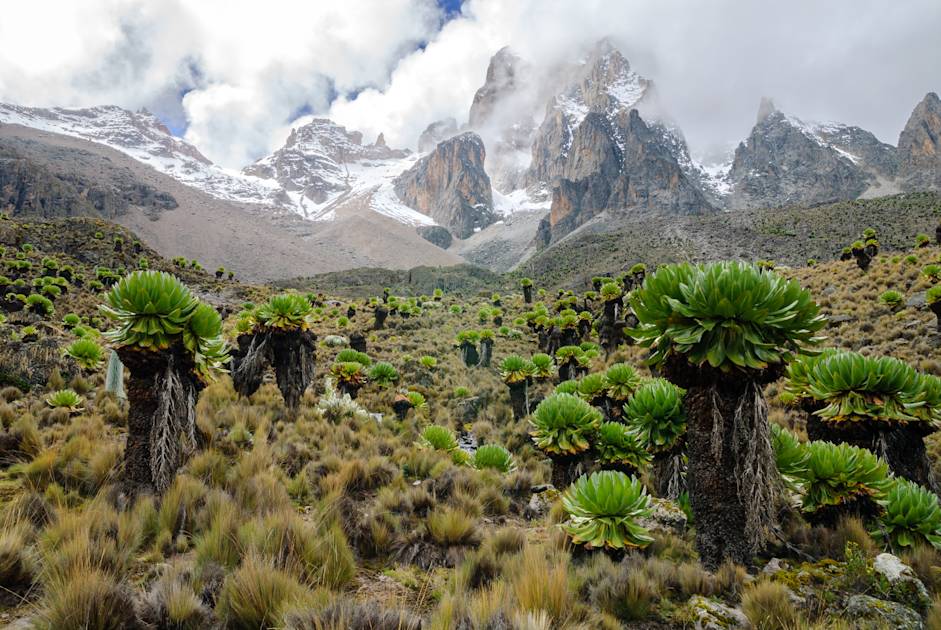
March is one of the best months to climb Mount Kenya, as it’s the height of the dry season, when you’ll have the most settled weather and the best visibility. Within Mount Kenya National Park, daytime temperatures are between 20°C to 25°C, but it’s much cooler on the summit (the temperature drops by around 6.5°C for every 1,000m/3,280ft you climb).
How to get there? Fly into Jomo Kenyatta International Airport in the capital of Nairobi - it’s a 6-7 hour drive from there to Mount Kenya, so we recommend a sightseeing stop or two enroute.
10. Los Lagos, Chile
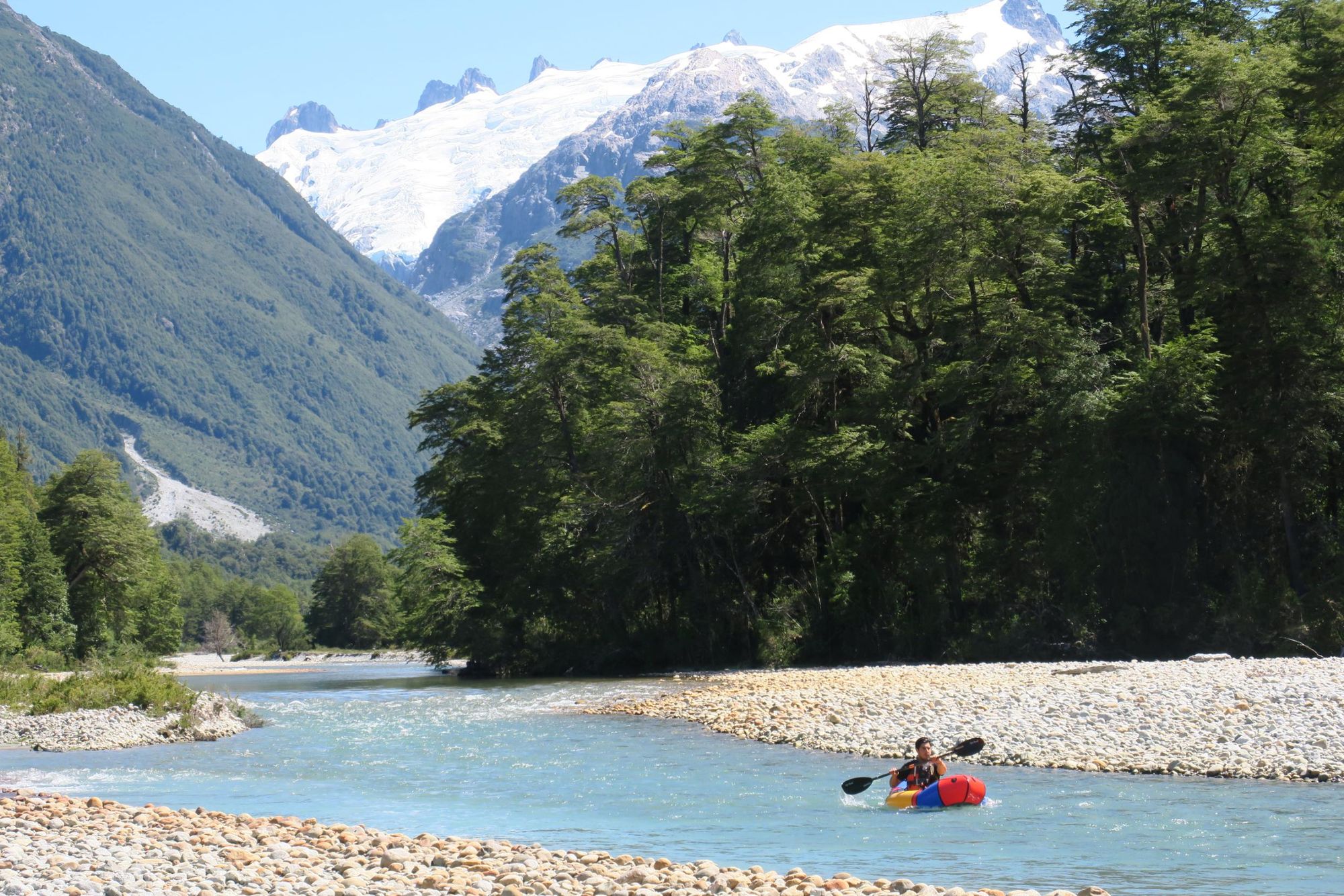
- Season: Autumn
- Temperature: 12°C high / 4°C low
- Time zone: GMT-3
- Currency: Chilean Peso
- Best for: Remote wilderness adventures
Carved by glaciers and sculpted by time, the Aysén region of Chilean Patagonia is one of the last great wilderness frontiers. In autumn, the rugged landscapes glow with fiery hues of red, orange, and gold, making it one of the most spectacular times to visit. A multi-day adventure here takes you through the stunning fjords, vast ice fields, and wild, untouched valleys of Patagonia.
One of the highlights of this region is Laguna San Rafael National Park, where you can kayak past towering icebergs and witness the dramatic calving of the San Rafael Glacier. For those who prefer trekking, the trails of Cerro Castillo National Park offer challenging hikes with rewarding views of jagged peaks and deep-blue alpine lakes.
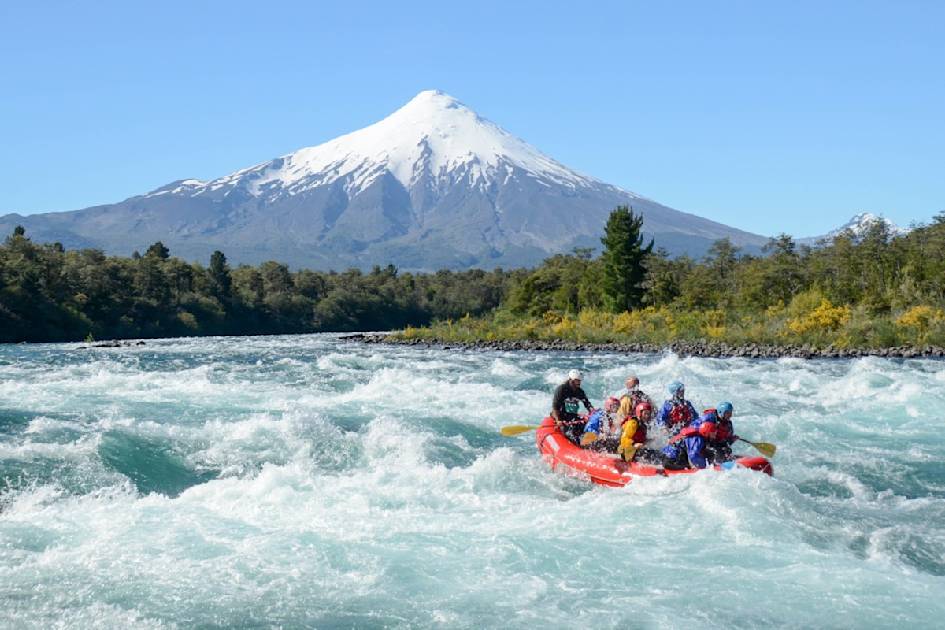
March in Patagonia is known for its unpredictable weather—expect sunshine, rain, and strong winds all in one day. While temperatures are cooling down, the tourist crowds are thinning, making it a perfect time to explore this remote paradise in solitude.
How to get there? Most travelers fly into Santiago before taking a domestic flight to Balmaceda. From there, it's a scenic drive into the heart of the Aysén region.
11. Namib-Naukluft National Park, Namibia
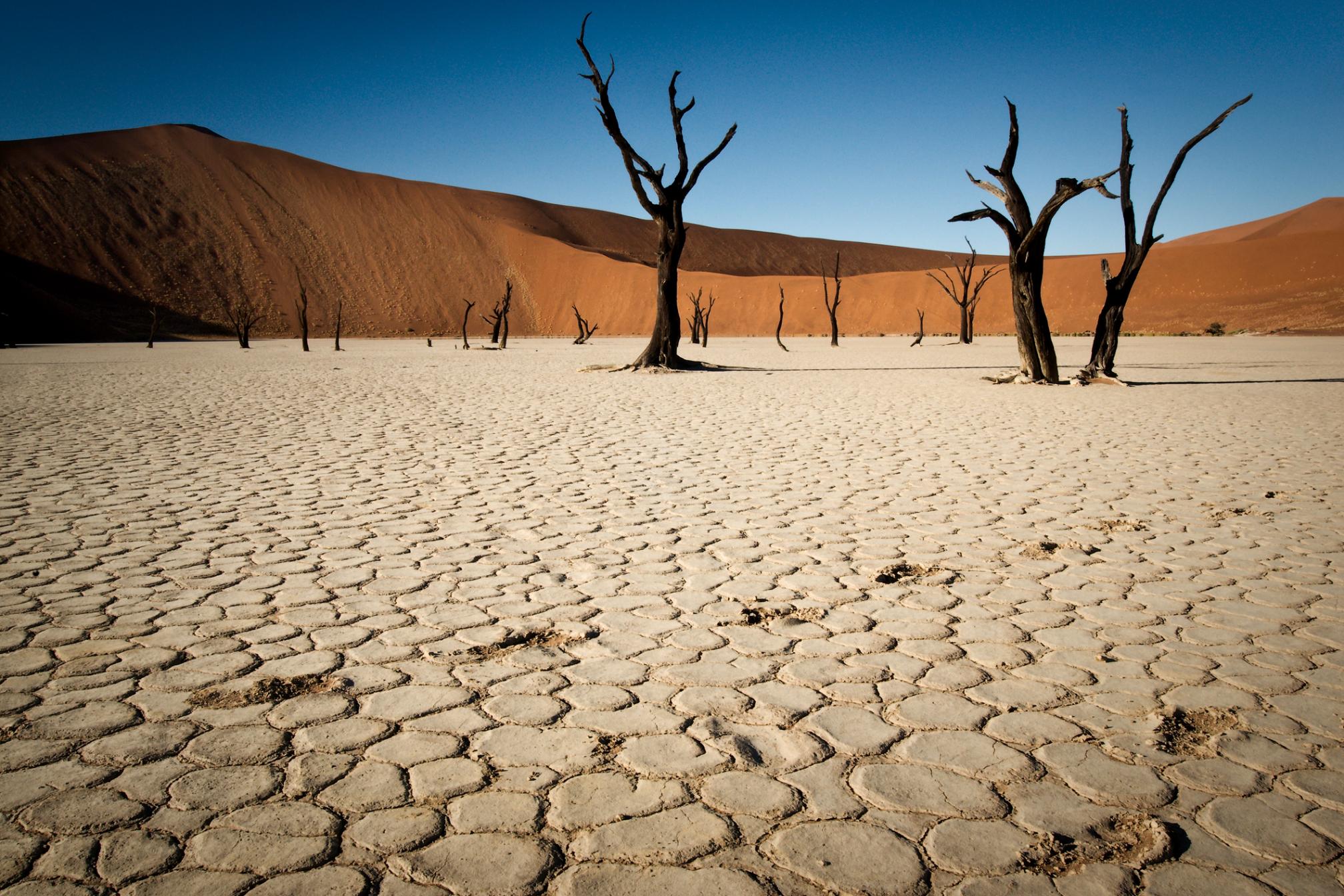
- Season: Wet
- Temperature: 38°C high/14°C low
- Time zone: GMT+2
- Currency: Namibian Dollar
- Best for: Desert exploration
Covering an area of 19,216 square miles (49,768 sq km), Namib-Naukluft National Park is the largest national park in Africa. It’s situated in Western Namibia and stretches from the Atlantic Ocean to the edge of the Great Escarpment, taking in the golden dunes of the Namib Desert and the stony Naukluft Mountains.
Hike the Olive Trail, a challenging hike from riverbank to canyon, plateau to rocky ridge. Head to Sossusvlei, famous for its undulating red dunes, to camp overnight in the desert. Marvel over the 900-year-old skeleton trees of Deadvlei or the dunes sloping into the sea at Sandwich harbour, where you can also kayak to Pelican Point to see colonies of Cape fur seals.
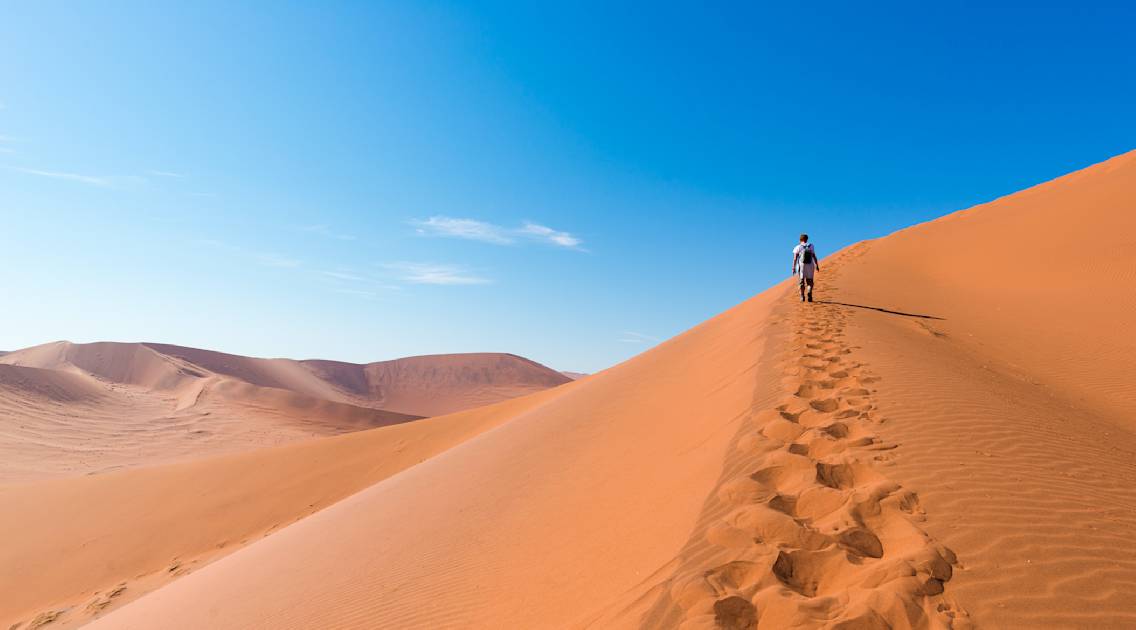
March is the end of the warm and wet season in Namibia - although precipitation in the Namib-Naukluft National Park is fairly minimal. With daytime temperatures averaging around 30°C - with highs up to 38°C - afternoon showers are welcome as they lower the temperature. At night, the temperature drops.
How to get there? Windhoek International Airport is the gateway to adventures in Namibia. It’s around three and a half hours of driving to get into the park from here.
12. Svalbard, Norway

- Season: Spring
- Temperature: -10°C high/-16°C low
- Time zone: GMT+1
- Currency: Norwegian Krone
- Best for: Arctic wilderness immersion
Svalbard is a rugged archipelago located in the Norwegian Arctic. Miles away from the mainland, it’s one of the world’s northernmost inhabited areas - and home to more polar bears than people. Embark on a mini expedition into the wilderness, dragging a pulka (small sled) containing all your gear. You’ll hike over glaciers and up snowcapped mountains, as well as learning how to make camp in sub-zero conditions. This is also an ideal time of year for snowmobiling and dogsledding across the tundra, or exploring glacial ice caves.
It’s one of the world’s northernmost inhabited areas - and home to more polar bears than people
By March, the polar night has ended - you’ll experience subtle sunrises, eerie twilight and long nights where you can look out for the northern lights. With temperatures ranging from -10°C to -16°C, you’ll need to wrap up warm.
How to get there? Fly into Longyearbyen Airport, near the island’s largest settlement - there are good connections from Oslo and Tromso.

13. Vjosa Wild River National Park, Albania

- Season: Spring
- Temperature: 16°C high/8°C low
- Time zone: GMT+2
- Currency: Albanian Lek
- Best for: Paddling wild rivers
The Vjosa is Europe’s last ‘wild river’, meaning it runs from source to the Adriatic Sea for 169 miles (272km) completely undammed. The river and its tributaries are now protected as a national park, which can be enjoyed by everyone. It’s the ideal river for kayaking or whitewater rafting - we particularly recommend the section through Këlcyrë Gorge, where the walls rise up to 1,000m (3,280ft).

March is the beginning of spring in Albania and temperatures rise steadily throughout the month, from around 10°C to 16°C. You will experience some rain, so bring warm clothes and waterproof clothing.
How to get there? Fly to the international airport to the Albanian Riviera is in Tirana, the Albanian capital, and is 75 miles (121km) away. It takes two hours by car to reach the Vjosa (near the village of Bisan), but you’ll need to keep driving south to Këlcyrë Gorge.
14. Osa Peninsula, Costa Rica

- Season: Dry
- Temperature: 37°C high/25°C low
- Time zone: GMT-6
- Currency: Costa Rican Colón
- Best for: Ocean dips and jungle treks
The Osa Peninsula is located in the south of Costa Rica, carpeted in pristine rainforest and surrounded by quiet beaches lapped by the Pacific. Hike through the jungles of Piedras Blancas National Park and spend the night tree camping in the jungle. Sea kayak along the inlets of Golfo Dulce, a rare tropical fjord with waters up to 600m (1,968ft) deep.

March is one of the hottest months of the year on the Osa Peninsula, with clear skies and temperatures averaging between 30°C - 32°C. It’s a great time of year for watersports like kayaking and snorkelling
How to get there? Fly into Golfito Airport, located on the Osa Peninsula. To reach it, you’ll need to book a domestic flight from Juan Santamaría International Airport in the capital San José - it has connections to the USA and Europe
15. Viñales Valley, Cuba

- Season: Dry
- Temperature: 29°C high/21°C low
- Time zone: GMT-4
- Currency: Cuban Peso
- Best for: Exploring authentic rural Cuba
The Viñales Valley in west of Cuba is a karst valley famous for its spectacular dome-like limestone outcrops (mogotes). It has a UNESCO designation thanks to its multicultural villages and the traditional agricultural techniques, crafts and music they practise.
Hike the Acuaticos Trail, which takes you high up into the mogotes, along farmer’s paths, or follow winding trails through the fruit plantations and tobacco farms in the country - stopping to learn about their traditions. You can even explore underground, visiting the labyrinthine Santo Tomas Cave System, the largest cave network in Latin America. You can also try traditional dishes in a paladar (family-run restaurant) - try ropa vieja, which is a shredded beef stew served with rice and beans.

March is the ‘cooler’ dry season in Cuba, with daytime temperatures in the high twenties - a pleasant temperature for exploring.
How to get there? Fly into Havana Airport, which has direct flights to Europe and North America.
16. Taghazout, Morocco

- Season: Spring
- Temperature: 23°C high/13°C low
- Time zone: GMT+1
- Currency: Moroccan Dirham
- Best for: Surfing the waves
If you’ve ever wanted to learn to surf, head to Taghazout, a laid-back town which has a number of ‘surf camps’ combining lessons with riad accommodation and other activities. You’ll spend your days on the beach learning basic techniques and then trying them for yourself, and refuelling with tasty Moroccan food at your riad each evening. Surfing can be surprisingly physical - we’d recommend combining it with yoga to stretch out those tired limbs.

March is a good time to visit Taghazout - you’ll experience consistent, beginner-friendly swell conditions. Despite being the beginning of spring, temperatures average a balmy 20°C to 23°C, getting cooler once the sun goes down.
How to get there? Fly into nearby Agadir and take a taxi or the Souk to Surf Shuttle to Taghazout.
17. Central Highlands, Sri Lanka

- Season: Dry
- Temperature: 23°C high/11°C low (in Nuwara Eliya)
- Time zone: GMT+5.30
- Currency: Sri Lankan Rupee
- Best for: A cup of tea with a view
Sri Lanka's Central Highlands consist of the forest-carpeted Knuckle Mountains, the Peak Wilderness Protected Area and the misty Horton Plains National Park - it’s an area rich in biodiversity with a UNESCO designation, home to rare species like the Sri Lankan leopard.
Take the iconic train through the highlands from Kandy to Nuwara Elia, the heart of Sri Lanka’s tea country. Explore the undulating tea plantations and high-altitude montane forests by hiking the newly created Pekoe Trail.

March is the dry season and one of the warmest months in Sri Lanka, but in the high altitudes of the Highlands it never gets too hot. Expect daytime temperatures between 20°C to 25°C, depending on the elevation.
How to get there? Fly to Bandaranaike International Airport in Colombo. It’s just under a three hour drive to Kandy - or you can take the train from Colombo Fort (a 2.5-3.5 hour journey).
18. Himalayas, Nepal

- Season: Spring
- Temperature: 25°C high/9°C low (in Pokhara)
- Time zone: GMT+5.45
- Currency: Nepalese Rupee
- Best for: Himalayan views
Nepal is home to the highest mountains in the world - and some of its best treks. You’ll have heard of the iconic trek to Everest Base Camp, but perhaps not of its more challenging variant, taking you up Cho La pass (5,420m/17,782ft) and past the glacial Gokyo Lakes.
And there’s also the Annapurna Sanctuary Route, taking you through lush rhododendron forest and deep into the Himalayas, where you’ll reach Annapurna Base Camp and take in the views of the 8000m+ (26,246ft) peaks of the Annapurna massif. Once you’ve completed the trek, head to Chitwan National Park for a safari - March is the start of the dry season, so wildlife sightings are common.
March is the beginning of the trekking season in the Himalayas. It’s when the snow begins to melt and the rhododendrons begin to bloom
March is the beginning of the trekking season in the Himalayas. It’s when the snow begins to melt and the rhododendrons begin to bloom. Expect clear skies and mild temperatures at lower altitudes - with daytime temperatures between 19°C to 25°C in Pokhara - although it will get cooler the higher you climb.
How to get there? Fly to Kathmandu International Airport. For the Annapurna Sanctuary Route you’ll need to drive to Pokhara, and for Everest Base Camp you’ll fly to Tenzing-Hillary airport in Lukla.

19. Sierra de Aitana, Spain

- Season: Spring
- Temperature: 22°C high/7°C low (Guadalest)
- Time zone: GMT+1
- Currency: Euro
- Best for: Learning to rock climb
The Sierra de Aitana are limestone mountains on the Iberian Peninsula, close to the city of Alicante. These jagged crags are a playground for rock climbers, with a huge variety of routes for beginners to the more advanced. They're also an ideal place to try your first via ferrata - which in this region consist of wooden bridges, slack lines, steep sky ladders, Tibetan bridges, and traverses on a series of dramatic rock formations.

Daily temperatures tend to range between 15°C to 18°C, rising higher towards the end of the month. There's little rain forecast across the month, meaning March is ideal weather for an active climbing holiday.
How to get there? Fly to Alicante and transfer to Guadalest, an hour's drive away.
20. Madeira, Portugal

- Season: Spring
- Temperature: 19°C high/14°C low
- Time zone: GMT+1
- Currency: Euro
- Best for: Canyoning and levada walks
The Portuguese Island of Madeira is becoming increasingly known for its hiking trails, which wind through the volcanic peaks and endangered laurisilva forest of its interior, often following the routes of old ‘levadas’ (irrigation channels). Its wild hinterlands are also fantastic for canyoning - you can abseil down waterfalls, and scramble your way down a network of rivers and natural pools.

Visit Achadas da Cruz, the most westerly point of Madeira, and take a steep downhill path to the traditional village of Fajá da Quebrada Nova, where many buildings now stand abandoned. From here, you can hike along the beach to Porto Moniz, and go for a bracing swim in its tidal pools.
Known as ‘the island of eternal spring’, Madeira is known for its mild climate. In March it has an average temperature of 18°C (and slightly cooler in the mountains). However, pack your raincoat for those spring showers.
How to get there? Fly into Funchal International Airport - it has direct flights to Europe and America - and catch the public bus into the town centre.
Feeling inspired? Check out our adventures departing in March.



